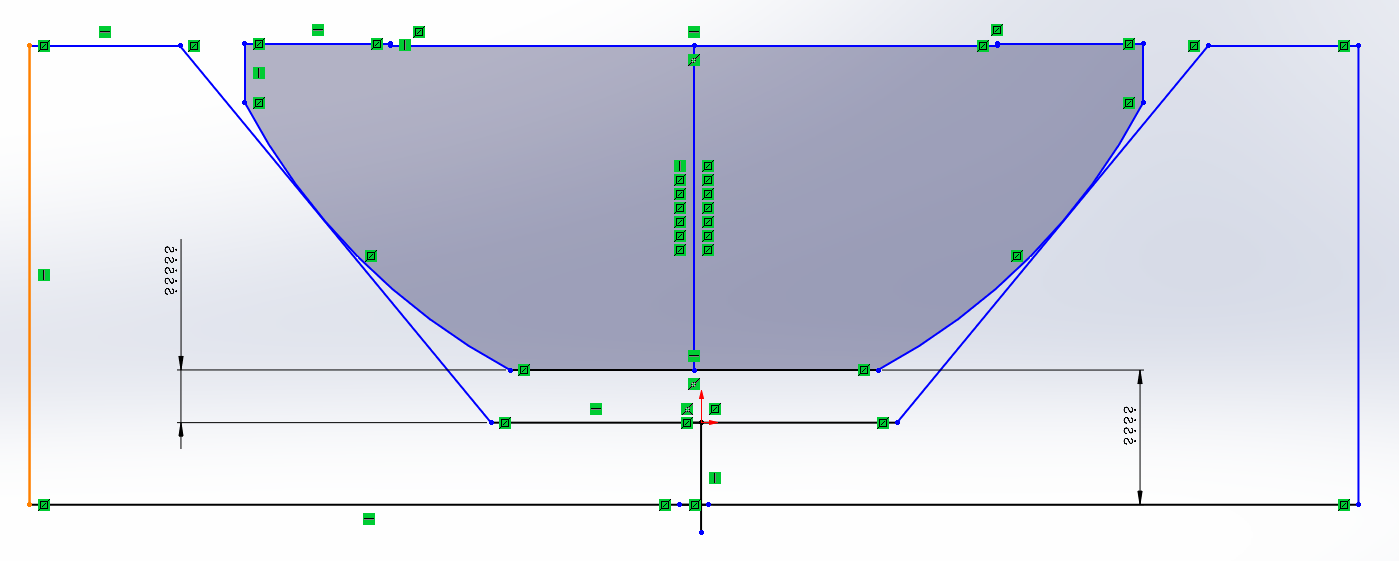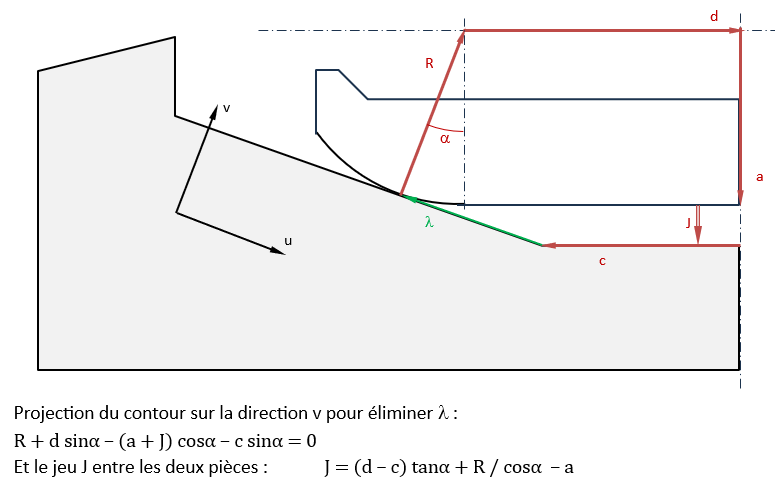A bastard solution: the ramp being linear, measure the clearance when the piece is at its highest on the ramp, and interpolate with position 0.
You can't do it like that since you have to take into account a lot of factors (ratings, tolerances that vary), right?
Yes, that's why it's bastard.
I think your formula is not far from good, but you should take different benchmarks from 65 and 68 to avoid a negative and then positive value. This should simplify the calculation. In short, take a reference point that is equal to 0 when the game is equal to 0.
Here is an image that may be more explicit... and one of the two odds "??" is sought (knowing that all the other values are already taxed)

Have you considered using " Design Study" in Solidworks?
This allows you to vary your dimensions...
calculate the game dynamically (with controlled odds)
Output an Excel table of the results obtained
and finally to define a not too crazy equation using an Excel graph...
Example of the use of design studies (calculation of the distance of the sensor produced in a hopper being emptied)
Hello @Winny10 ,
A pattern that strongly resembles that of a previous discussion...
We should be precise about what is being sought: the distance between planes of the first scheme, or the play of the second?
The diagram below defines the expression of the set J (to be checked).

Once the value of the clearance J has been calculated, it is sufficient to add the ad hoc thicknesses of the parts to determine the distances between planes.
In the case of diagram n°1 (rather imprecise...), it is enough to add dimension 36. The term 40 - 25 seems suspicious to me.
I wasn't aware of it, thank you I'll take a look at it if needed. I am in the process of analyzing/understanding the answer of my ... Blt^^
Thank you very much, it unblocked me in my problem. Thank you!!!